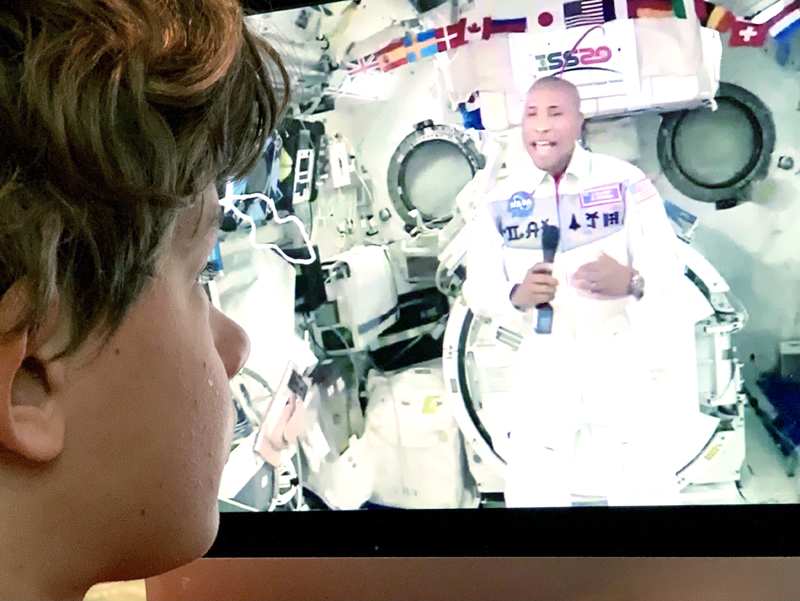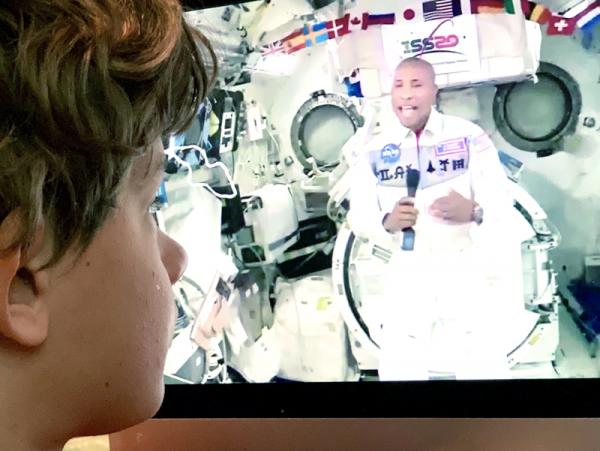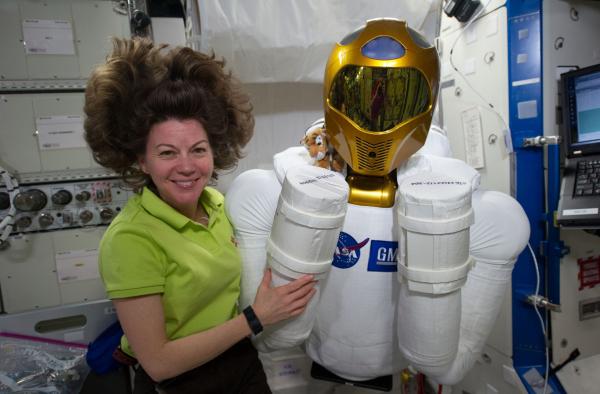KID REPORTERS’ NOTEBOOK
Taking Flight With SpaceX

On November 15, 2020, the SpaceX Crew Dragon headed to the International Space Station (ISS) with four astronauts aboard. NASA’s Michael Hopkins, Shannon Walker, and Victor Glover are accompanied by Soichi Noguchi, a Japanese aeronautics engineer and JAXA (Japan Aerospace Exploration Agency) astronaut.
The Crew-1 team is slated to spend 166 days aboard the ISS, ushering in a new era of space transportation. The commercially-operated flight, the first of its kind, is the result of a partnership between Elon Musk’s SpaceX and NASA.
Among those celebrating the successful launch of the mission was retired NASA astronaut Catherine “Cady” Coleman. In 2010, she took part in a NASA mission to the ISS, where she lived for 159 days.
“NASA decided that they would ask companies to bring their own solutions to space flight,” Coleman told me via video. “NASA is supposed to do the things that have never been done, to take the big risks. Then companies can come in and work to bring supplies and people up and down to space efficiently. It’s part of a big plan.”
Before November, it had been almost 10 years since an American spacecraft launched into space. The United States has been dependent on Russia for crewed flights since retiring the Space Shuttle program in 2011. The Commercial Crew Program (CCP) began that year with the goal of bringing crew and cargo to space on private aircraft. On May 30, 2020, astronauts Bob Behnken and Doug Hurley were the first astronauts to fly aboard the new Crew Dragon to the ISS, but they returned shortly afterwards.

Crew-1’s Victor Glover addresses an audience from the ISS on December 3 as Quade watches from home.
CREW-1 CELEBRATES DIVERSITY
Another milestone for the current mission, Coleman said, is the presence of Glover, who is her friend. He is the first Black astronaut to live on the ISS for an extended period of time.
“I’m so excited it’s Victor’s turn because Victor brings so many people with him as a Black astronaut,” Coleman said. “The whole crew represents different kinds of people. They call themselves Crew-1, and they say that their mission is for all of us. They wanted the whole world to see themselves in their mission."
Teamwork and diversity were themes highlighted in Glover’s live video call from the ISS on December 3. “If we hope to solve humanity's most important problems, we must work together,” he said. “All teams need diverse members in terms of their backgrounds, skill sets, and ways of thinking.”

When NASA Cady Coleman traveled to the ISS, she brought Hobbes, her son’s favorite plush toy, to help explain microgravity.
BABY YODA HITCHES A RIDE TO SPACE
A Baby Yoda toy from the Star Wars movies hitched a ride into Earth’s orbit aboard the Crew Dragon. NASA astronauts traditionally mark their exit from Earth’s gravitational pull when a toy, known as a zero-gravity indicator, is released to float in the spacecraft.
Coleman fondly remembers her own mission pal, a plush tiger named Hobbes. “It’s really something to demonstrate that, hey, now you’re in space, because everything in the cabin is strapped down, and nothing is going to float unless you bring something,” Coleman said. The toy helped her illustrate lessons on microgravity for her son and share knowledge about space with kids around the world.
“The people who will be going to the Moon and Mars [someday] are people that are your age,” Coleman added. “You’re the future of space exploration, but you need to be ready.”
A great way to get involved right now is to watch the ISS from home. “The space station goes around the Earth 16 times a day,” Coleman said. “It’s really cool to look up and see the space station and realize that they’re seeing you and you’re seeing them.”
